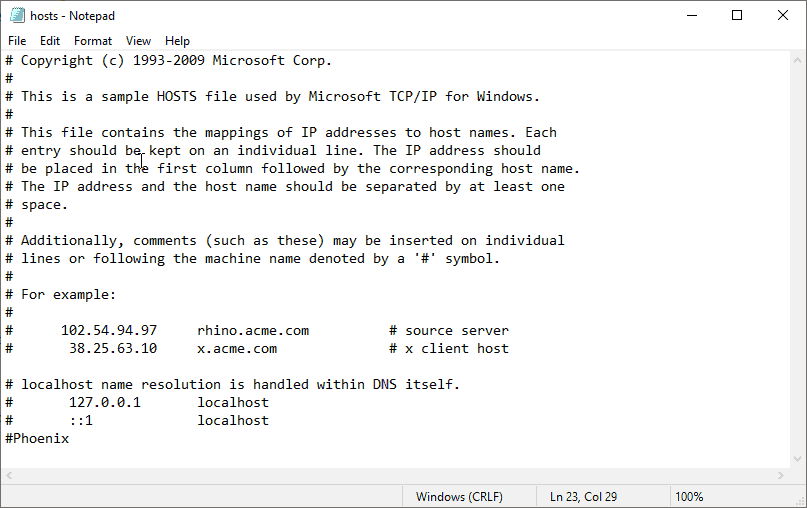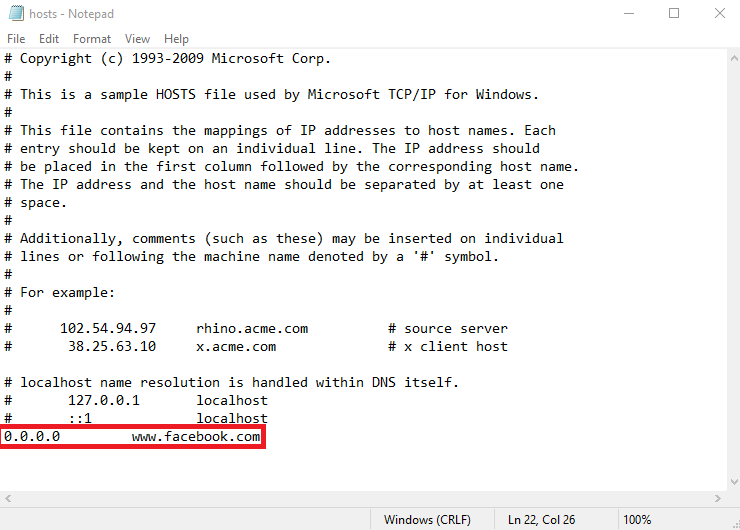
- Edit host files for mac how to#
- Edit host files for mac for mac os x#
- Edit host files for mac pdf#
- Edit host files for mac install#
- Edit host files for mac code#
When you are developing in a sandbox environment. The hosts file is a plain text file that the operating system uses to link host names to IP addresses.
Edit host files for mac install#
We are going to install a development site on a GridPane server and edit our hosts file to redirect our browser to the GridPane server when visiting the client domain. Here is a short one to get me blogging again.

In our example, we have a new client who owns their domain at and they currently have a coming soon holding page at their old hosting. Press Enter and continue to enter your password 4.
Edit host files for mac code#
Type the following code into Terminal sudo vi /etc/hosts 3.
Edit host files for mac for mac os x#
For example, you can map this site with an IP 74.220.193.173 so that whenever you open the site hosts file entry is used to map the IP quickly and the save time on resolving host name. If youre on a Mac, you could download Gas Mask, a simple and free hosts file manager for Mac OS X Leopard and Snow Leopard.
Edit host files for mac how to#
We’ve also made video demonstrations of how to do it as well: Hosts file will be loaded in nano editor and use arrow marks to reach the last line where you can enter new IP and domain name. You will now have the hosts file open in the Nano. The format for each line is IP-address, then a tab or a single space and the hostname (s). Modifying the hosts file under MAC OS Launch Terminal, type sudo nano /private/etc/hosts and press Return. You will notice that it is a simple file that contains just a few lines of text and. The standard hosts file in Yosemite looks like this: Edit your hosts file. To edit the host file, you must first open it by double clicking it. Enter your password (it will not be shown) and hit. Following the steps in this recipe, you can edit a system file using TextEdit and put off learning vi for another day. So, I checked the IP of both, with the host file edited and. In this article, we will use a simple example to go through the process of editing your hosts file to enable this. Open Terminal and enter sudo nano /etc/hosts and hit. An alternative is the use of TextEdit, the graphical text editor application, but under normal circumstances, you can open a system file like hosts but cannot save it. You may need to flush your Mac’s DNS cache, so copy/paste the below command string into. You can also accomplish this with tools like, which is also a handy website for your toolbox, but we highly recommend that you learn how to use your local hosts file for redirects. Allowing you to test the migration before swapping over DNS.


Edit host files for mac pdf#
It can not only edit PDF text, insert images and signatures, annotate PDFs, but also allows users to convert PDF to Word for more flexible editing. Open Terminal and type the following command, replacing “with the website of your choice: ping After the changes have been made to the host files on Mac, save it in its current location on the Desktop. PDF Editor for Mac is an innovative Mac PDF Editor. Now, whenever anyone using the Mac tries to go to the Web browser will fail to load the page.Īnother method is to type the IP address of a valid site instead of 0.0.0.0. To find a website’s IP address, you can “ping” the site via Terminal. This allows them to see a site how an actual user or visitor will. Network developers, for example, can reroute a domain name to a site in development. In our case, we want to block YouTube, You’ll map to 0.0.0.0 which, as an invalid IP address, will result in an error. Editing the Mac Hosts file is a great way to test out new web servers or networks.

( How to Block A Website on Windows) It’s required to type the IP address that is wanted to be blocked and to assign followed by a hostname. A great use for an edited hosts file on your Mac is to block access to specific websites.


 0 kommentar(er)
0 kommentar(er)
